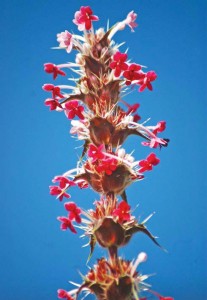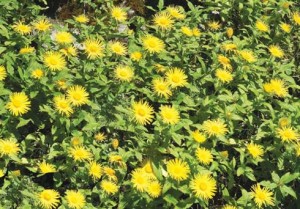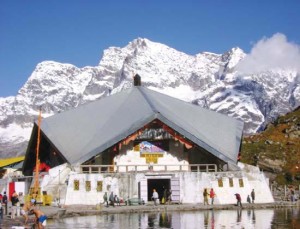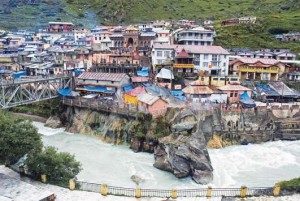
The road to a paradise on earth, called the Valley of Flowers, in Uttarakhand, was paved with pain. The 13-km trekking trail coiled through some of the most spectacular mountain-scapes in India (make that the world). However, it was steep, narrow, largely unpaved and demanding. We had set out on foot from the little town of Govindghat on the Joshimath-Badrinath road with a spring in our step and a gurgling stream as our companion.
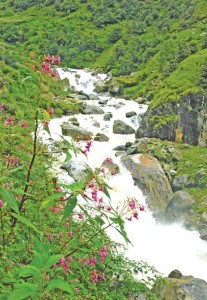
Within 10 minutes, the relentless climb up the rugged terrain started to take its toll. Ignoring the protests of our limbs and lungs, pampered and scarred with urban comforts and pollution, we pushed on. Another five minutes and we were drawing upon what seemed like our last reserves of strength and determination. We tried to distract ourselves by looking for photo ops – and there were umpteen – but even that became a futile exercise as perspiration seeped into the corners of our eyes and blurred our vision. Mechanically, we placed one foot in front of the other; it was important we did not give despair a chance to surface.

And then a miracle. Adrenalin kicked in and suddenly the mountains shed their threatening posture and even though the trail was as challenging as ever, we knew that the prize – The Valley – at the end would not slip from our grasp. We washed our eyes with fresh water from a mountain stream and the world around us was a beautiful place. Snow-draped Himalayan peaks flexed their bulging muscles against the backdrop of a blue horizon; a puff of cotton candy cloud rested against a forested slope before proceeding on its nomadic journey across the sky; a silvery river sliced through the green valley below us; waterfalls draped black cliffs with white curtains of cascading water; a wild flower wedged in a crack of rock glowed yellow… The valley, it seemed, had sent out a reception committee to welcome us.
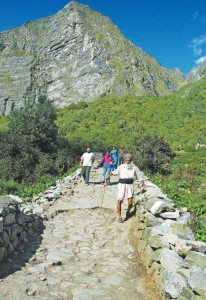
Vaye Guru. We greeted fellow travellers and pilgrims on the trekking trail for the Valley shares these mountains with Hemkundsaheb, the shrine of a revered Sikh Guru. They came in many avatars: turbaned men with flowing beards, some grey, others black; women in colourful salwar kameezes; rosycheeked kids. Families stopped by gurgling streams to rest and share picnic hampers. The faces of those trudging up with us were etched with determination. Those going down wore the serene look of people who have been blessed.
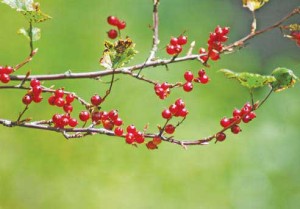
We bent down to take a photograph of a mountain goat and its frisky young lamb. However, when we stood up again our heads started to spin and we had to grab a wooden railing to keep our balance. “Don’t let that stress you out. What you are experiencing is high altitude dizziness. Very common at these heights”, an elderly Sardar reassured us with a pat on our shoulders. He was apparently speaking from experience as he has been traversing the Hemkundsaheb pilgrim trail once every year for the last 20 years. “At these heights, you should avoid sudden movements; not push or exert yourself unduly and do things at a pace you are comfortable with,” he added.
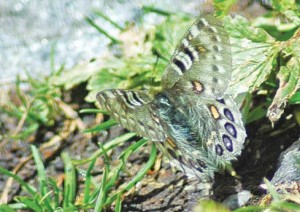
Know India
Good advice and we took it. In fact we needed it the longer we were on the trail and the higher we went. Sure, the scenery was mind blowing and beautiful, but the effort started to take its toll. The milestone said we still had three kilometres to go! Thankfully, the trail dipped, but the relief was brief and the last two kilometres was a steep ascent. The sight of a camp with flimsy tents (thankfully we did not choose this option) was a reassuring sight; it meant we were close to our destination.
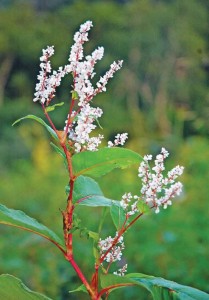
The last stretch to Gangaria
Finally, some six hours after we had started out from Govindghat, we limped into Gangaria with a sense of relief. The valley was another three kilometres away and this little mountain village would be our base for the next two nights. After we had checked into the state-run lodge, showered and rested our weary limbs, we set off to explore the little village built around stone-paved streets that ran through it. Sadly, almost every second stone seemed to have been dislodged, making the simple act of walking a balancing act. We chose to view this as an advantage: since we had to keep looking down to see where our feet landed, we did not have to suffer the sight of the unplanned village; a jumble of buildings, restaurants, hotels, shops, stalls and garbage dumps.
That night we ignored the sound of rodents scurrying between the ceiling and roof of our guest room and tucked ourselves into our beds for a well-earned sleep. Suddenly, the night exploded: flashes of lightning lit up the lawn outside our window and claps of thunder reverberated as they bounced off the sides of the surrounding mountains. Rain drummed on the roof above us. We found ourselves fretting: would the excursion to the Valley the next day prove to be a total washout? Then, despite our fretting, nature’s fury and the gnawing of rodents, we fell into a deep sleep.
The gods smiled the next morning and greeted us with perfect weather; a deep blue sky dabbed with puffs of white cloud. The manager of the lodge, who apparently knew the fickleness of the weather in the mountains, cautioned us not to get our hopes up too high. “The weather here is as fickle as the world of fashion: it can change on a whim and without giving you any notice.”
Taking his advice, we grabbed a quick breakfast and set off for the valley. The entry gate to paradise was located half a kilometre outside Gangaria. Looking down at the village from up there, we realised how one’s perception of a place can change when seen from a distance. From our height, the messy little place looked like a cosy alpine village, nestled in the embrace of a towering pine forest.
With the last semblance of civilization behind us, we set off for paradise. We crossed a sturdy stone bridge that straddled a busy river and followed a narrow path that zigzagged up the face of the mountain. A signpost indicated that the valley was another two kilometres away but we felt like we had already arrived. As the trail snaked higher up the slopes, the forest cover started to thin out and trees finally gave way to meadows that were quite unlike any we had seen before. Surely this was the valley, but a marker on a rock indicated that our destination was still another kilometre away.
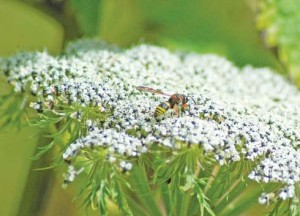
From there, the trail traced the banks of a sprightly young stream that bounded over rocks and obstacles as it tumbled through a green gorge painted with licks of colour: reds, yellows, purples…we gingerly stepped over a fragile makeshift bridge that straddled the playful stream and came upon a large signboard that welcomed us to the Valley of Flowers.
And we arrived at the Valley of Flowers
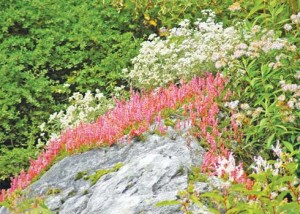
The map on the board showed trails that led through the UNESCO World Heritage Site but, quite honestly, we were in no hurry to go anywhere for we had already arrived. It did not take us long to realise that to go to the valley looking only for flowers is like wearing blinkers, for nature blooms here in umpteen ways. It is a vast and diverse canvas of ever changing moods and textures. Droplets of water splashing into sparkling blue streams and rivers; waterfalls cascading down craggy cliffs; icicles hanging like stalactites from the mouth of rocky caverns; glaciers with a hint of blue raking the cleavage of mountains; mighty snow-draped peaks… and, of course, meadows painted with wild flowers.
It is also home to a variety of wildlife like deer and the rare and endangered snow leopard. The chance of spotting these elusive animals was slim at best, but just knowing that they had a home where civilization, as we humans define it, was an alien concept, was a reassuring thought. What we did get to see in abundance were a whole host of bees and insects including butterflies with rainbows on their wings. They had come to feast on the bounty of nectar that the valley laid out for them.
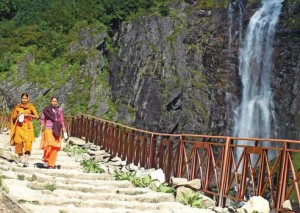
We had visited the valley in early September and though it was after the grand flush of colours that sweeps over it in July and August, we were nevertheless enveloped by a sense of allpervading peace. A dew drop, quivering on the lip of a flower petal, glistened like a solitaire diamond. A bee hovered over a delicate purple flower before darting in to collect its nectar. And as the winged guest left to go and flirt with the next bloom, the dew drop slid off and splashed into a sun kissed puddle. We thought we heard the flower, now relieved of its burden, sigh; a sigh that mingled with the buzzing of bees, whisper of the wind, the rustling of leaves… adding notes to the song of nature. We closed our eyes and listened to the happy gurgling of streams, the whisper of the wind, the laughter
of distant waterfalls, the chirping of birds… beauty lay in the details that punctuated this extravagant landscape.

And all this was just one movement of nature’s symphony; an opus that starts around March each year with the spring thaw when blood-red rhododendrons paint the valley in decisive colours. By May, the tempo eases and early blooms skip through the composition like flutes. With the coming of the rains in June, the tempo starts to pick up, building up to a grand crescendo of colours by July, a climax that is sustained by over 500 species of flowers working in harmony right through to August. Come September and the movement is soft and gentle once more and rust-red autumn leaves, berries and late autumn blooms add brushstrokes of colour to the Valley.
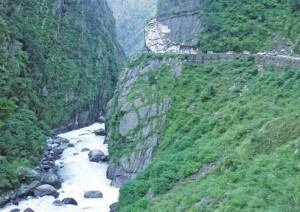
When we were there, the stage was set for the winter sonata as snow slipped down from the mountain peaks and cast an icy blanket over the Valley. The following spring, the Valley would wake from a deep slumber and burst into song once more. Each year the melody is the same but rendered with a stunningly original and different interpretation. As mist started to tumble down the slopes in front of us, we sensed that the weather was about to change and it was time to leave paradise. On the trek back to Gangaria and civilisation, we joined the stream of pilgrims returning from the holy shrine at Hemkundsaheb. Most had the serene look of those who had been blessed by divinity. We probably wore a similar look, the only difference being that our guruji was Mother Nature whose ingenious outpourings found sublime expression in the many altars that studded her cathedral: the Valley of Flowers.

Fact file
The Valley of Flowers is an UNESCO World Heritage Site. The valley is open to the public from around April when winter frees it from its icy embrace and remains open for six to seven months up to September/October. The Valley starts to bloom with the coming of the rains in mid June and is at its colourful best during the months of July and August. The entrance of the Valley is located 3 km from the town of Gangaria, which is another 13 km trek from Govindghat on the Joshimath-Badrinath mountain road. There is an option to ride a pony up to Gangaria. These animals, however, are not allowed beyond this point and the only way to cover the last segment is on foot. An overnight stay at Gangaria is a must to visit the valley.
Tip: Plan to spend two nights in Gangaria for if the first day is rained out,then you can visit the valley on the second day. And if the weather is fine, visit Hemkundsaheb the following day.
The closest airport is at Delhi from where one can drive down to Joshimath, via Rishikesh / Haridwar in the northeastern reaches of Uttarakhand.

Alternatively, you can take a train from Delhi to Haridwar and drive from there to Joshimath where Leisure Hotels ( www.leisurehotels.co.in) has a luxury tented camp.
The Garhwal Mandal Vikas Nigam (GMVN), an arm of Uttarakhand Tourism, also has a number of tourist lodges and guest houses in the area including one at Gangaria. For more information visit Uttarakhand Tourism Development Board at: www.uttarakhandtourism.gov.in
Excursions in the region
On the banks of a mountain lake stands a sacred Sikh shrine that marks the place where Guru Govind Singh, the tenth and last Guru, surrendered his physical body and spirit to the Lord after prolonged meditation. The site is also associated with Hindu mythology for it was here at Lokpal, as the place is otherwise known, that Lakshman (brother of Lord Ram) performed protracted penance. A small shrine commemorates his effort.
There is no accommodation for visitors at Hemkundsaheb and visitors must return the same day to Gangaria (5 km away) which also serves as the base camp for the Valley of Flowers.
The abode of Lord Vishnu on the banks of the Alaknanda River is part of the holy Char Dham pilgrim circuit (the other three being Yamunotri, Gangotri and Kedarnath). Housed in the 15- meter high temple with a gilded dome is a black stone idol of Lord Vishnu sitting in a meditative pose. Tapt Kund and Surya Kund are two hot springs that flow below the temple. A dip in these sulfurous waters (55 degrees C) refreshes the body and soul and is considered a must before one enters the main temple.
On a clear day one can see Neelkanth, a majestic Himalayan peak that towers 6,600 mts above sea level. Also worth seeing are the Vyas Gufa (a cave from where Sage Vyas is said to have chronicled the epic Mahabharat, Ganesh Gufa (a small temple close to the cave where Lord Ganesh is said to have written the Mahabharat, Bhimpul (the source of River Saraswati) and Vasudhara waterfalls (the point from where the Pandava brothers along with their wife Draupadi began their journey to heaven) – which are linked with Hindu mythology and are a part of the Badrinath pilgrim circuit.
Finally, Mana Village (4 km) from Badrinath, inhabited by an Indo-Mongolian tribe, is the last Indian village before the Tibetan border. Badrinath lies beyond Govindghat on the Joshimath-Badrinath mountain road.
Ananda in the Himalayas
The Valley of Flowers may be an uplifting experience but it can take a physical toll. Round off the adventure by checking in at the world’s leading destination spa before stepping out to face the big bad world once more. Yes, this award-winning resort (it has been repeatedly voted the world’s best a number of times in surveys conducted by leading travel publications), is the ideal way to top off the vacation.
Joshimath
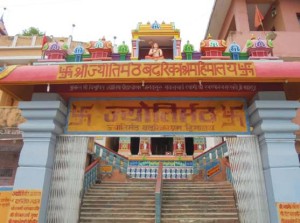
This is the base town for the Valley of Flowers, Hemkundsaheb and Badrinath. The town itself is congested and has little to offer but from here one can take a cable car up to the ski resort town of Auli and drive through the picturesque Tapovan Valley, where a hot spring hisses and spits out of a muddy outcrop.
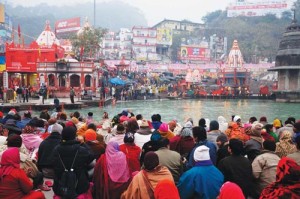
Rishikesh/Haridwar
The two pilgrim towns are the launching pad of a Valley of Flowers adventure. It is here that the River Ganga leaves the mountains and enters the plains (according to mythology, it is here that her parents handed her over to her in-laws). The two towns brim with legends and spiritual energy. Attend a beautifully choreographed river aarti at the Parmath Ashram in Rishikesh, take a holy dip at the Har-ki-Pairi in Haridwar, attend a yoga class…instant nirvana may be lurking behind the next corner. A glutton for thrills? Go river rafting, trek, rappel…

Rajaji National Park
A wildlife safari goes well with back-to-nature-adventure and the Rajaji National Park near Rishikesh is an exciting option. Here you get to say hello to elephants, deers, jackals, wild boar… maybe even a tiger.


